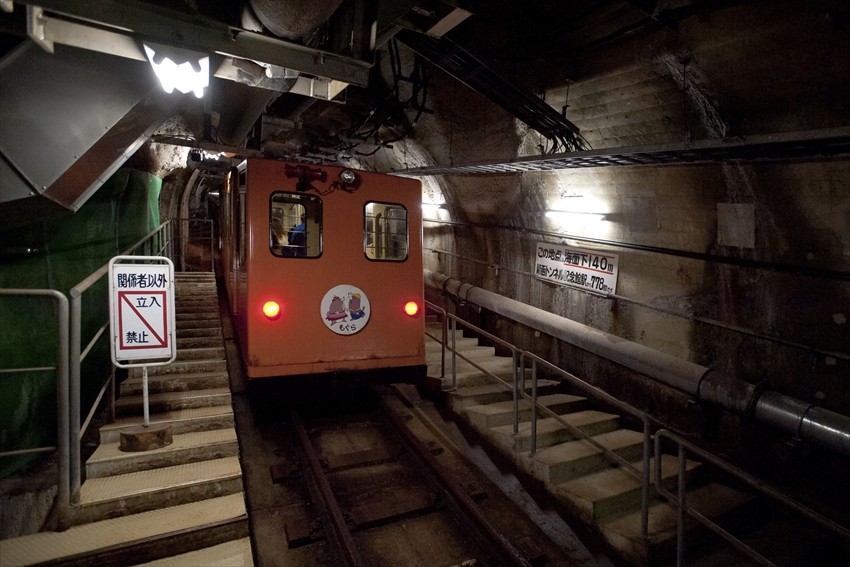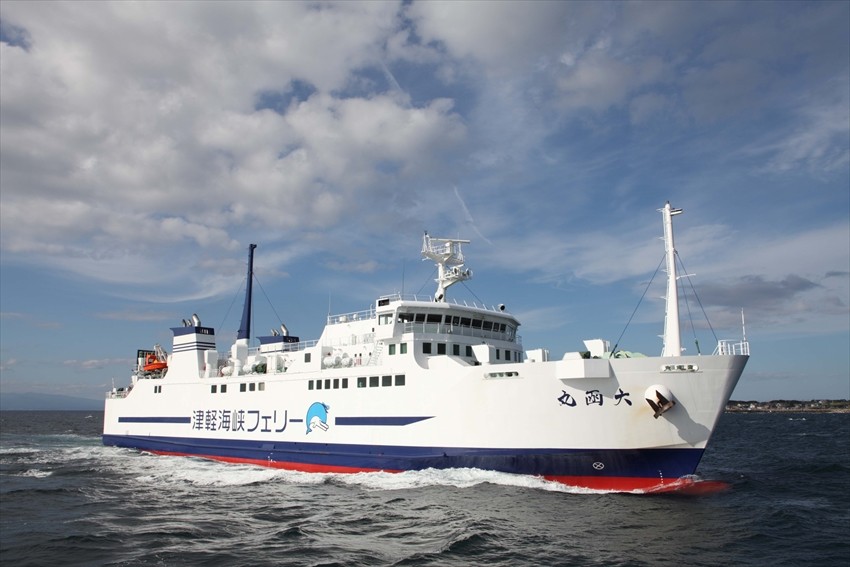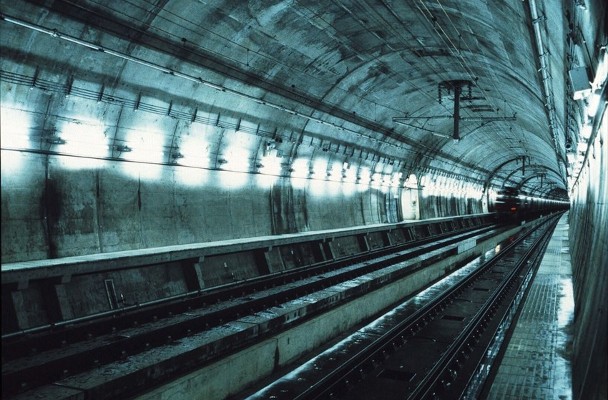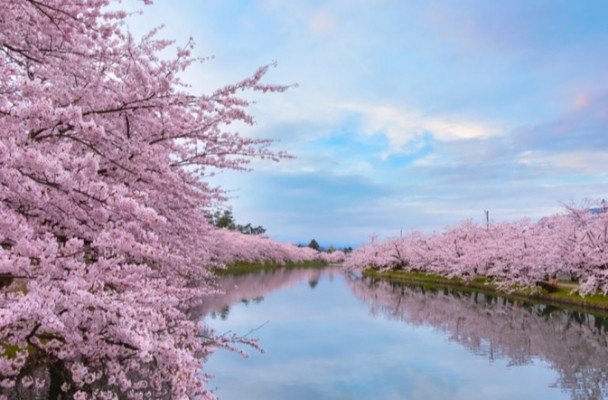
Connecting Honshu with Hokkaido, the Seikan Tunnel is a submarine tunnel stretch of over 50km. Revolutionising travel between Japan’s mainland and its largest island, the tunnel allowed train access, removing the reliance on boats and the precarious seas.
What is the Seikan Tunnel?

The Seikan Tunnel is the second longest tunnel in the world, beaten only by the Gotthard Base Tunnel in Switzerland. The Seikan Tunnel is 53.8km long, with just over 23km of that being underneath the Tsugaru Strait, making it the longest tunnel with underwater section globally. It connects Aomori Prefecture with Hokkaido and allows people and freight to travel by train between the two, with the underwater section being 240m below sea level.
Where does the Seikan Tunnel Go?
The tunnel connects Shin-Aomori to Shin-Hakodate-Hokuto and the line is eventually to be extended all the way to Sapporo. The project is expected to be completed by 2030, having started in 2005.
What is the Seikan Tunnel Used For?
The tunnel is used for both freight and passenger trains. The majority of the freight transported through the tunnel is agricultural goods produced in Hokkaido, such as potatoes and onions as well as dairy produce. The introduction of the Hokkaido Shinkansen for passengers in 2016 meant the tracks were converted to dual-gauge and freight trains must now switch to electric-locomotives for the shared section of the route.
The History of the Seikan Tunnel

The idea of an underground route was being considered as early as the Taisho period (1912 - 1925), but the surveys only began in 1946. Japan had lost territories in battle and were encouraging returnees back to the mainland, but over 1400 people died in 1954 as a number of ferries capsized while making the crossing. This pushed Japan National Railways to expedite the process and work on the tunnel design began in earnest. It took 24 years to complete the tunnel, with construction beginning in 1964 and ending in 1988. The opening was celebrated with a special 500 yen coin and the narrow-gauge railway was opened, with overnight services available until 2016.
In 2016, the Hokkaido Shinkansen began operation, replacing the regular narrow-gauge passenger train service. The trains initially travelled at a maximum speed of 140km per hour within the tunnel and form part of the Hokkaido Shinkansen rail line. In 2017, the tunnel was chosen by a UNESCO advisory panel as one of the 20 symbols that represent Japan’s cultural and technological heritage.
While air-travel has become the more popular means of transport for Hokkaido, the recognition of environmental impact means bullet trains are likely to increase in popularity again soon.
Learn More at the Seikan Tunnel Memorial Hall

While it may suggest a tragedy took place here, the Seikan Memorial Hall is in fact dedicated only to preserving the history of the tunnel’s construction (although it does also pay its prospects to the 34 people who died during its construction). The museum has a mixture of 3D models, photographs and a construction course visitors can take, meaning it's a truly immersive learning experience.
One of the highlights of the museum is the Seikan Tunnel Tappi Shako-Line: an underwater cable car that is also the world’s shortest private railway. The 9-minute journey is not for the faint-hearted, but offers the chance to experience the tunnel without being inside a vehicle. The end station has displays with diggers and the museum has recreated the busy atmosphere of construction.
Spot Information
- Name: Seikan Tunnel Memorial Hall (青函トンネル記念館)
- Address: 99 Minmayatatsuhama, Sotogahama-machi, Aomori
- Location: The museum is located in Aomori by Cape Tappi, at the tip of the cape.
- Access: The museum is best accessed by train from JR Minamiya Station which is around 100 minutes from JR Aomori Station. From there, the Sotogahamamachi Loop Bus runs to Tappi between April 25th and November 10th, alight at Tappi Gyoko and walk 15 minutes to the museum. Alternatively it is easier to access by car.
- Hours: 9am - 4.30pm between April 25th and November 10th.
- Entry: Free
How to Travel in the Seikan Tunnel

You can travel through the Seikan Tunnel using the JR East Hokkaido Shinkansen Hayabusa Service. There are around 30 trains per day with a few options for those wanting to experience the underwater tunnel.
- To simply view the tunnel head to the Seikan Tunnel Memorial Hall and try the world’s shortest private railway. The cable-car takes 9 minutes and transports visitors to a small section of the tunnel (see section above).
- The shortest Shinkansen option is to go from Okutsugaru-Imabetsu on the northern Aomori peninsula to Kikonai on Hokkaido’s south coast. This journey takes 33 minutes and costs 4240 yen. While there isn’t much to do in these two towns, it’s an affordable option if you don’t have the rail pass.
- The more useful short option is to travel between Shin-Aomori and Shin-Hakodate-Hokuto. This journey takes one hour and costs 7,720 yen, but is included in the JR Railpass.
- Alternatively, you can travel from Tokyo to Shin-Hakodate-Hokuto which is an 862.5km journey. It takes just over four hours and costs 23,420 yen per person, but is also covered on the JR Railpass.
Alternative Access Between Aomori and Hokkaido

If you’re not keen on taking the tunnel there are still plenty of ways to reach Hokkaido from Aomori including by car, sea and air.
By ferry
There are two options to travel by ferry, with the Tsugaru Kikyo ferry offering the shortest route between Oma and Hakodate or a slower option from Aomori to Hakodate.
The main service departs from Aomori City Ferry Terminal and arrives at Hakodate Ferry Terminal. There are 8 round trips a day and the larger vehicles including the Blue Dolphin take three hours and forty minutes. Dogs are welcome on board and you may even see dolphins swimming alongside the boat. Tickets start from 2,260 yen for a standard ticket during low season to 7,230 for a suite during peak season, with reductions for children, and students available.
The faster Daimaru takes only 90 minutes and operates twice a day between Oma Ferry Terminal and Hakodate. The tickets start from 1,840 yen for standard class in low season to 3,610 yen for a first-class seat in peak season.
By Car
If you are travelling by car you can drive to Aomori Port and board one of the Tsugaru Kikyo Ferries that accept vehicles. Prices start from 13,400 for a light car in low season and rise to 24,100 for a car under 6m in peak season. There are options for motorbikes and bikes as well. You can also catch the faster option from 10,50 yen for a small car in low season to 19,270 yen for a car under 6m in peak season, with options for bikes and motorbikes available too.
By Plane
You can also travel from many areas of Japan to Hakodate or Sapporo. If travelling from Aomori you can fly from the city’s airport to Sapporo in under an hour with flights operated by JAL and ANA with prices starting from 7,000 yen. Flights to Hakodate also take under an hour (50 minutes) and are operated by JAL and ANA, starting from 7,000 yen.
Flights between Tokyo’s Haneda Airport and Hakodate take around one hour and twenty minutes and cost around 9,000 yen. The route has flights operated by Air Do, ANA and JAL.
To fly to Sapporo from Tokyo you can either travel from Narita Airport for cheaper airlines like Peach, Spring Airlines and Jetstar, with tickets costing around 5,000 yen in advance and the journey taking just under two hours. From Haneda, there are services operated by Air Do and ANA with the journey taking around one hour and thirty-five minutes and costing from 8,000 yen if booked in advance.



Comments